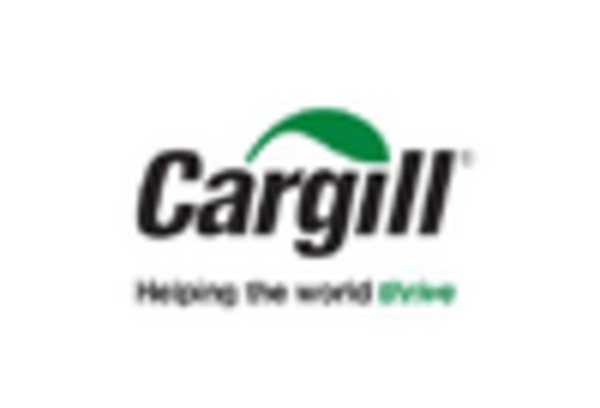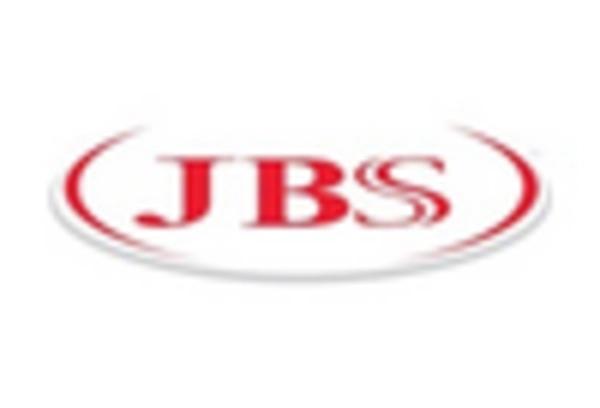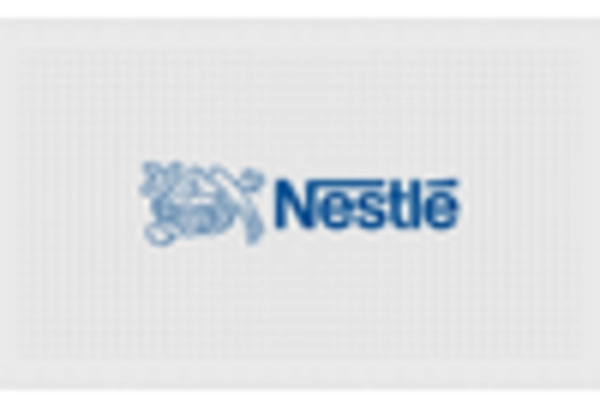Rising Protein Demand
The increasing global population and shifting dietary preferences contribute to a heightened demand for protein-rich foods, particularly in the Animal-Based Meat and Dairy Product Market. As consumers become more health-conscious, the need for high-quality protein sources is paramount. According to recent data, meat and dairy products account for a substantial portion of protein intake in many diets, with meat providing approximately 36% of the world's protein supply. This trend is likely to continue, as protein consumption is projected to rise by 1.5% annually. Consequently, the Animal-Based Meat and Dairy Product Market is poised for growth, driven by the necessity to meet this protein demand.
Health and Wellness Trends
The growing awareness of health and wellness is influencing consumer choices in the Animal-Based Meat and Dairy Product Market. As individuals prioritize their health, there is a noticeable shift towards products that are perceived as healthier options. This includes lean meats, low-fat dairy, and fortified products that offer additional nutritional benefits. Recent studies indicate that consumers are willing to pay a premium for products that align with their health goals, which has led to a rise in the market for functional foods. The Animal-Based Meat and Dairy Product Market must adapt to these evolving preferences to remain competitive and relevant.
Culinary Trends and Innovations
Culinary trends play a pivotal role in shaping consumer preferences within the Animal-Based Meat and Dairy Product Market. The rise of gourmet cooking and the popularity of diverse cuisines have led to an increased interest in premium meat and dairy products. Consumers are increasingly seeking unique flavors and high-quality ingredients, which has resulted in a surge in artisanal and specialty products. For instance, the market for organic and grass-fed meat has expanded significantly, reflecting a shift towards more sustainable and ethically sourced options. This trend suggests that innovation in product offerings will be crucial for companies aiming to capture market share in the Animal-Based Meat and Dairy Product Market.
Sustainability and Ethical Sourcing
Sustainability concerns are increasingly shaping consumer behavior in the Animal-Based Meat and Dairy Product Market. As awareness of environmental issues grows, consumers are more inclined to support brands that prioritize sustainable practices and ethical sourcing. This shift is evident in the rising demand for products that are certified organic, free-range, or grass-fed. Companies that adopt sustainable practices not only appeal to environmentally conscious consumers but also position themselves favorably in a competitive market. The Animal-Based Meat and Dairy Product Market is likely to see continued growth as sustainability becomes a key factor in purchasing decisions.
Technological Advancements in Production
Technological advancements are revolutionizing the Animal-Based Meat and Dairy Product Market, enhancing efficiency and product quality. Innovations such as precision farming, genetic engineering, and automation in processing are streamlining production processes. These technologies not only improve yield but also reduce waste, contributing to more sustainable practices. For instance, the implementation of smart farming techniques has shown to increase productivity by up to 20%. As these technologies become more accessible, they are expected to drive growth in the Animal-Based Meat and Dairy Product Market, enabling producers to meet rising consumer demands while maintaining quality.


















Leave a Comment